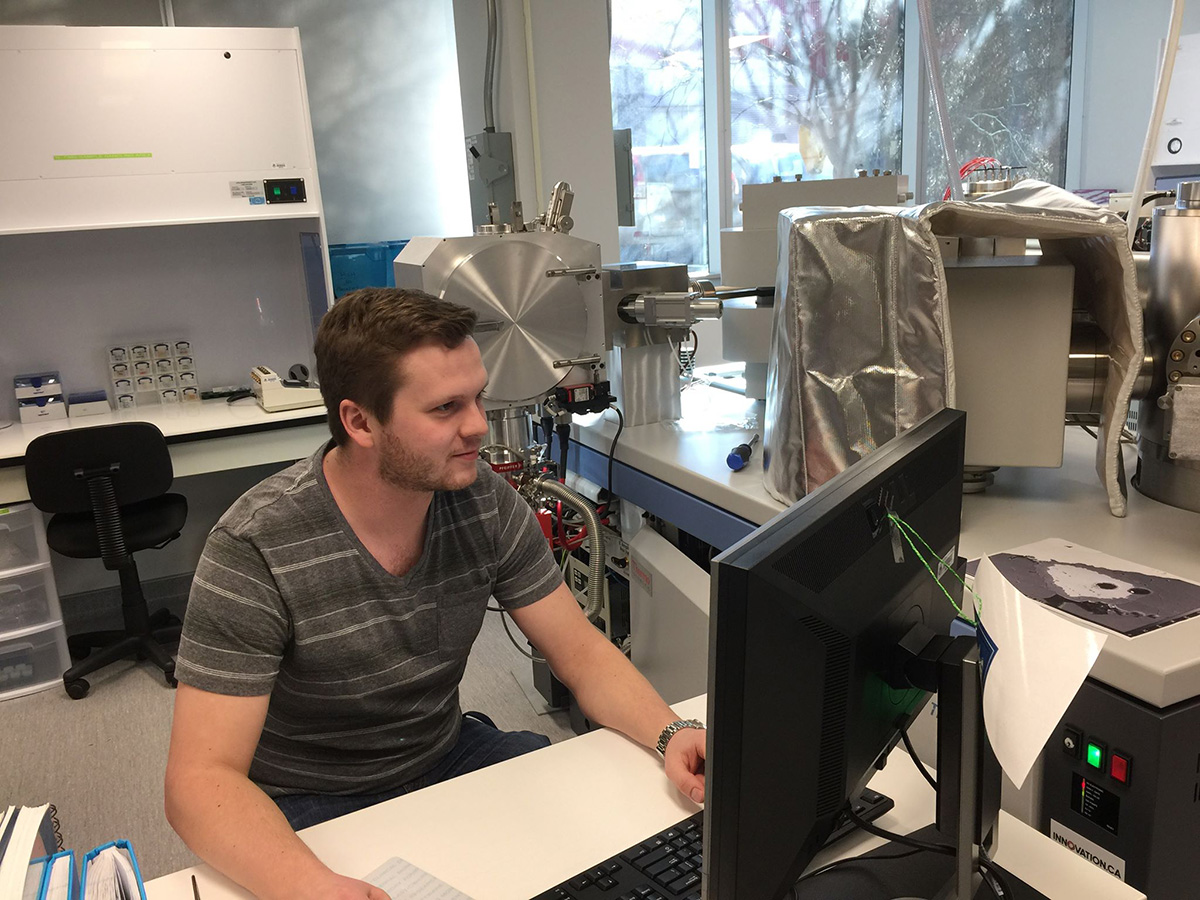
Graduate student Garret Harris studies osmium isotopes in the Arctic Resources Laboratory.
Graduate student Garrett Harris is looking for new diamond potential in the Canadian North. While most of Canada's diamond mines are in the Slave Craton, located in the Northwest Territories, Harris' research is focused further east in Nunavut's Rae Craton, a region that hasn't yet seen much exploration.
"First, we have to learn more about the region as a whole, to see if we can gather insight on where we should and shouldn't look for new potential kimberlites and mines," explained Harris. His research in the Rae Craton is on a suite of mantle rocks from a kimberlite field, an underground volcano that brings these mantle rocks and diamonds to Earth's surface.
"Unfortunately, my study only indicates hints of minor diamond potential for this kimberlite field, with minimal economic impact," explained Harris. "But with my research, we are able to better understand the region as a whole and further the scientific knowledge in the region."
Award-winning research
In fall 2017, Harris presented his work at the International Kimberlite Conference held in Gaborone, Botswana, a week-long conference related to kimberlites, diamonds, and everything in between. It is one of a handful in the world focused on this topic. His presentation was awarded best poster.
"I was definitely surprised and excited to have this research recognized by a group of experts in this field," said Harris. Following the conference, he stayed in Botswana for a week to visit mine operations and exploration sites, what he described as a true, once-in-a-lifetime experience.
Harris is excited to graduate this spring, following his completion of the internship component of the Diamond Exploration Research and Training School (DERTS) program with supervisor Graham Pearson.
"Being a DERTS student has been a great experience. I've learned a lot about what it means to work in this field," said Harris. "After I graduate, I'd love to work in industry."